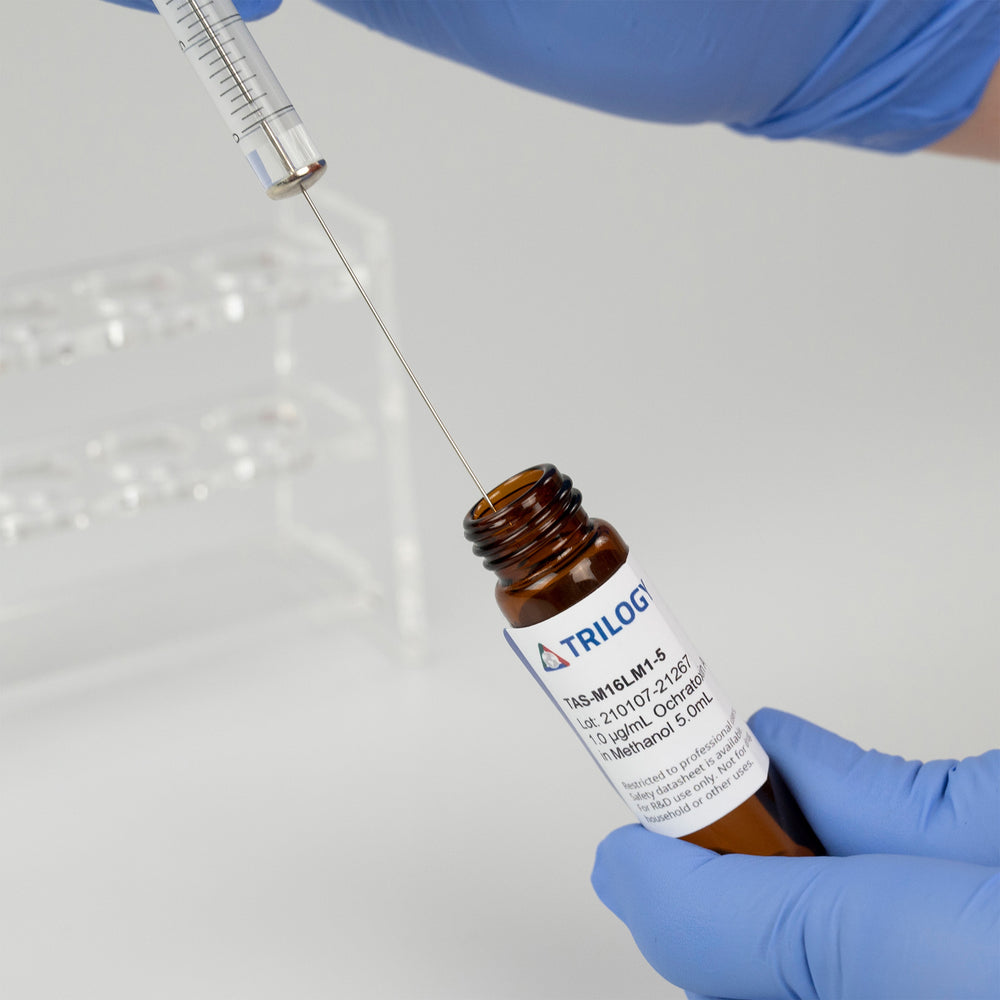Use of Mycotoxin Binders in Animal Feed
Lynette Hischier
February 5, 2024

A mycotoxin binder is a compound that’s added to animal feed to mitigate risks to an animal’s health caused by mycotoxin contamination.
Mycotoxin contamination in livestock feed can cause a large financial and economic impact to both farmers and producers. Incorporating mycotoxin binders as part of a comprehensive mycotoxin management plan can be a realistic and beneficial strategy for some industries to help mitigate these risks.
In this post we’ll walk through the basic mechanics of mycotoxin binders, the industries that utilize them and go over the primary elements that make a mycotoxin binder effective.

What is a mycotoxin binder?
A mycotoxin binder is a substance that is added to animal feed in small quantities to trap mycotoxins while they are in the gastrointestinal tract. This prevents the toxin from entering the animal’s bloodstream through their gut where they can cause harm to the animal. Mycotoxin binders are used when other preventative measures have failed and when food and feedstuff cannot be regularly checked for contamination.
There are many different types of binding substances, and each type offers its own method of mycotoxin management.
These different types of binders are:
Inorganic Binders:
Inorganic mycotoxin binders include compounds like aluminosilicates, bentonites, clays, and zeolites. These materials physically adsorb mycotoxins in the digestive tract, preventing them from being absorbed into the animal's system. In essence, they act as a protective shield, trapping the toxins and allowing them to pass harmlessly through the animal's body.
Organic Binders:
Organic mycotoxin binders, such as yeast cell walls, have an organic nature and work slightly differently than inorganic binders. They interact with mycotoxins to reduce their bioavailability, making them less harmful to the animal. The goal remains the same: to prevent toxins from being absorbed into the animal's system.
Toxin-Modifying Binders:
This group of binders takes a different approach than inorganic and organic binders. Instead of merely adsorbing mycotoxins, they actively modify the toxin's physical structure to render it non-harmful or minimally harmful. This approach is achieved using substances like natural microbial agents and enzymes. These types of may be the newest addition to the mycotoxin binding industry but are not only effective at mycotoxin control but are also often touted for their additional benefits, such as improving the animal's immune functions.
It’s important to note that certain materials are better at binding than others. Some substances will bind well to certain mycotoxins while failing to bind to other mycotoxins. There is no simple one-size-fits-all solution when it comes to using mycotoxin binders which is why it’s important that the use of binders is just one piece of a mycotoxin management plan.
Industries that use mycotoxin binders.
Industries that involve the production of livestock and animal farming incorporate mycotoxin additives into their feed sources to mitigate mycotoxin contamination risks.
These agricultural industries include:
Livestock Farmers:
Farmers that raise livestock, such as cattle, goats, and sheep, often use mycotoxin binders to protect the overall health and well-being of their animals. Whether being raised for meat production, breeding purposes, or both, it’s critical for livestock farmers to protect their herds against contaminated feed.
Dairy Farmers:
Farmers that raise livestock, such as cattle, goats, and sheep, often use mycotoxin binders to protect the overall health and well-being of their animals. Whether being raised for meat production, breeding purposes, or both, it’s critical for livestock farmers to protect their herds against contaminated feed.
Swine Farmers:
Farmers that raise livestock, such as cattle, goats, and sheep, often use mycotoxin binders to protect the overall health and well-being of their animals. Whether being raised for meat production, breeding purposes, or both, it’s critical for livestock farmers to protect their herds against contaminated feed.
Poultry Producers:
Farmers that raise livestock, such as cattle, goats, and sheep, often use mycotoxin binders to protect the overall health and well-being of their animals. Whether being raised for meat production, breeding purposes, or both, it’s critical for livestock farmers to protect their herds against contaminated feed.
Aquaculture Producers:
Much like with land animals, mycotoxin-contaminated feed poses health risks to farmed fish and shrimp. Contaminated aquafeed can lead to reduced feed consumption, immune system suppression, organ damage, and reproductive issues. All these issues can lead to a lower quality final product, including shrimp or fish fillets intended for human consumption.
What makes an effective mycotoxin binder?
This may seem like a difficult question because what makes a mycotoxin binder effective for one industry may not work for another.
There are a few things to keep in mind when exploring binding options:
Versatility:
It can bind a wide range of mycotoxins in various pH conditions.
Retention:
For many binders, the adsorption of mycotoxins is reversible and sensitive to pH changes.
Efficiency of Adsorption:
Adsorbents are not selective for mycotoxins. They will bind other molecules present in the GI tract such as essential nutrients.
Overall Safety:
Overall safety of the material must be considered when deciding to incorporate a binder.
Analytical testing of mycotoxin binders for efficiency.
It's important to remember that mycotoxin binders are just one element in what should be a multi-part mycotoxin management plan. Think of them like a safety net that's there just in case the 5-point safety harness fails. Mycotoxin binders can be an efficient tool to help protect animals and their resulting products against the harmful effects of mycotoxins when other preventative measures have failed. Since binders work differently based on the targeted mycotoxin and animal species, it’s critical that the finished feed product be tested for its efficiency prior to use. Field studies and animal trials and are often a necessary step in evaluating the efficiency of a mycotoxin binder but they are also costly and time consuming. Performing an analytical binder study prior to animal trials is a economical solution to minimizing these costs.
Trilogy Analytical Laboratory offers a complete mycotoxin binding study utilizing an ISO/IEC 17025:2017 validated method.
About Trilogy
Trilogy is a food and feed safety laboratory specializing in mycotoxins, mycotoxin binder analysis, biogenic amines and animal drug residue testing. Trilogy Analytical Laboratory opened its doors in 1999 when its founders recognized a need in the mycotoxin industry for quick result turn-around utilizing reliable reference methods provided in an analytical setting. One of the main pillars of Trilogy’s strategy is to operate using a comprehensive quality program that we can rely on to ensure performance parameters are met every single time. From this philosophy the Trilogy line of quality products was born with the mycotoxin industry in mind.
Media Contact: Lynette Hischier, l.hischier@trilogylab.com






